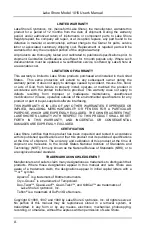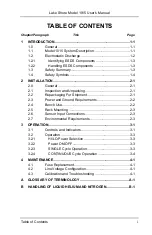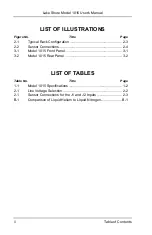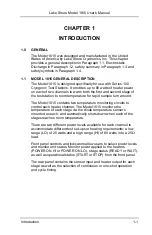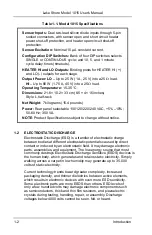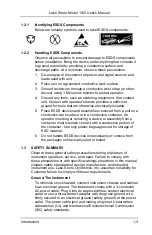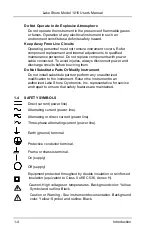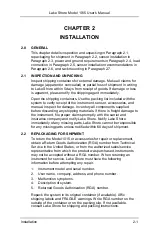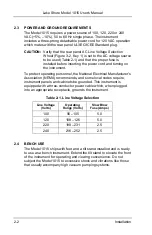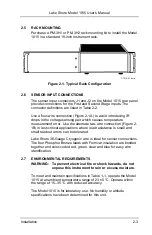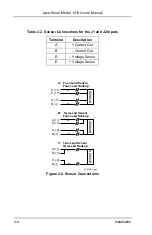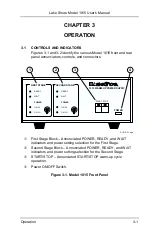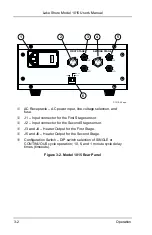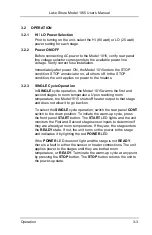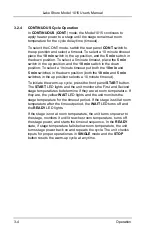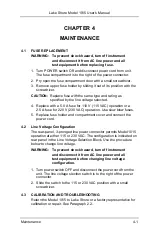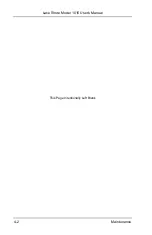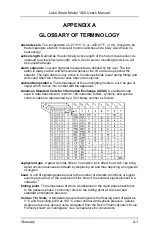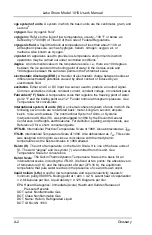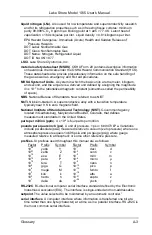
Lake Shore Model 1015 User’s Manual
1-2
Introduction
Table 1-1. Model 1015 Specifications
Sensor Inputs:
Dual two-lead silicon diode inputs through 5-pin
socket connectors, with sensor open and short circuit heater
power shut-off protection, and heater open circuit shut-off
protection.
Sensor Excitation:
Nominal 10 µA constant current.
Configuration DIP Switches:
Bank of four DIP switches selects
SINGLE or CONTINUOUS cycle; and 10, 5, and 1 minute
cycle delay times (timeouts).
HEATER HI and LO Outputs:
Binding posts for HEATER HI (+)
and LO (-) outputs for each stage.
Output Power:
LO
– Up to 25 W (1 A, 25 V) into a 25
!
load.
HI
– Up to 80 W (1.75 A, 45 V) into a 25
!
load.
Operating Temperature:
15-35 °C
Dimensions:
21.6
×
10.2
×
33 cm (8.5
×
4
×
15 inches)
Style L, half-rack
Net Weight:
7 kilograms (15.4 pounds)
Power:
Rear panel selectable 110/120/220/240 VAC, +5% –10%;
50-60 Hz; 350 VA.
NOTE
: Product Specifications subject to change without notice.
1.2
ELECTROSTATIC DISCHARGE
Electrostatic Discharge (ESD) is a transfer of electrostatic charge
between bodies at different electrostatic potentials caused by direct
contact or induced by an electrostatic field. It may damage electronic
parts, assemblies, and equipment. The low-energy source that most
commonly destroys Electrostatic Discharge Sensitive (ESDS) devices is
the human body, which generates and retains static electricity. Simply
walking across a carpet in low humidity may generate up to 35,000
volts of static electricity.
Current technology trends toward greater complexity, increased
packaging density, and thinner dielectrics between active elements,
which results in electronic devices with even more ESD sensitivity.
Some electronic parts are more ESDS than others. ESD levels of
only a few hundred volts may damage electronic components such
as semiconductors, thick and thin film resistors, and piezoelectric
crystals during testing, handling, repair, or assembly. Discharge
voltages below 4000 volts cannot be seen, felt, or heard.


